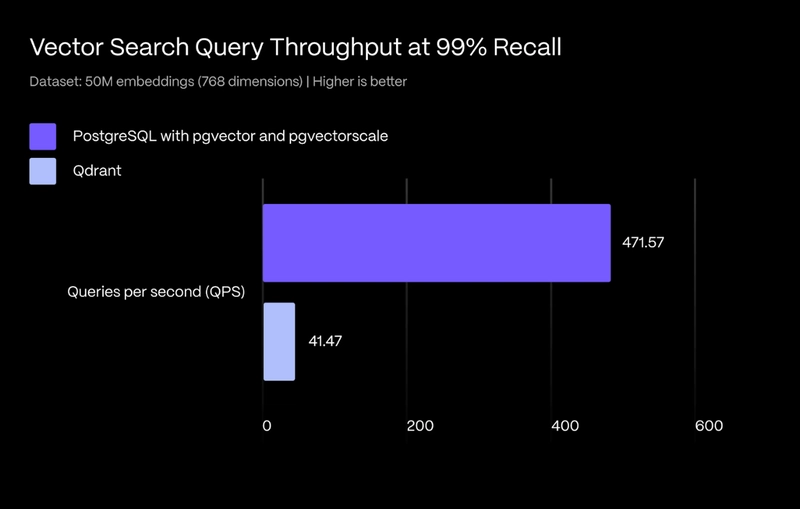Understanding Complex Database Concepts: An In-Depth Guide
Welcome! In the world of software development, databases are the bedrock upon which applications are built. While basic CRUD (Create, Read, Update, Delete) operations are fundamental, truly robust, scalable, and reliable systems require a deeper understanding of advanced database concepts. This article will serve as your comprehensive guide, exploring the critical areas of Transactions, Optimization, Scaling, Partitioning, and Sharding, primarily through the lens of PostgreSQL, a powerful and popular open-source relational database. We'll dissect the theory based on your notes and illustrate concepts with practical Raw SQL and Drizzle ORM examples. Part 1: The Cornerstone - Database Transactions Imagine performing a critical sequence of operations, like transferring money between bank accounts or processing an online order. You need assurance that these multi-step processes complete fully and correctly, even if errors or system crashes occur midway. This is the realm of database transactions. What is a Transaction? A database transaction is a sequence of one or more database operations (e.g., INSERT, UPDATE, DELETE, SELECT) treated as a single, indivisible logical unit of work. The core principle is simple yet powerful: either all operations within the transaction succeed and their changes are permanently saved, or none of them are saved, and the database is left in the state it was in before the transaction began. This "all or nothing" behavior is fundamental to maintaining data integrity. The ACID Test: Guarantees of Transactions Transactions provide four crucial guarantees, collectively known by the acronym ACID: Atomicity: Ensures the "all or nothing" property. If any part of the transaction fails (due to an error, constraint violation, or system crash), the entire transaction is rolled back, undoing any changes made so far. Think of the bank transfer – it's atomic; you can't just debit one account without crediting the other. Consistency: Guarantees that a transaction transforms the database from one valid state to another. It enforces all defined rules, constraints (like NOT NULL, UNIQUE, CHECK), and triggers. If a transaction would violate these rules (e.g., making an account balance negative when a CHECK constraint forbids it), it will be rolled back to maintain consistency. Isolation: Ensures that concurrent transactions (multiple transactions running simultaneously) do not interfere with each other's execution. Each transaction should operate as if it were the only one running on the system at that time. This prevents various concurrency anomalies that could lead to incorrect data. Durability: Guarantees that once a transaction has been successfully completed and committed, its changes are permanent and will survive subsequent system failures, such as power outages or crashes. The database ensures committed data is safely stored, typically in logs and then flushed to disk. Concurrency Anomalies: Why Isolation is Critical When multiple transactions access and modify the same data concurrently without adequate isolation, several problems can arise, compromising data integrity: Dirty Reads: Transaction T1 reads data that has been modified by Transaction T2, but T2 has not yet committed. If T2 subsequently rolls back its changes, T1 has read "dirty" data that never officially existed in the database. Non-Repeatable Reads: Transaction T1 reads a piece of data. Before T1 finishes, Transaction T2 modifies or deletes that same piece of data and commits. If T1 attempts to read the data again within the same transaction, it gets a different value or finds the data missing. The original read is "non-repeatable". Phantom Reads: Transaction T1 executes a query that retrieves a set of rows based on some condition (e.g., SELECT * FROM orders WHERE status = 'pending'). Before T1 finishes, Transaction T2 inserts new rows (or deletes existing ones) that satisfy T1's query condition and commits. If T1 re-executes its query, it will see additional (or fewer) rows – these are the "phantoms". Isolation Levels in PostgreSQL To manage the trade-off between consistency and performance/concurrency, databases offer different isolation levels. These levels define the degree to which one transaction is isolated from the effects of others. PostgreSQL supports the standard SQL isolation levels: Read Uncommitted: The lowest level. Allows Dirty Reads, Non-Repeatable Reads, and Phantom Reads. Transactions can see uncommitted changes made by others. This level offers maximum concurrency but minimal consistency and is rarely used in practice. Read Committed: This is the default level in PostgreSQL. It prevents Dirty Reads. However, Non-Repeatable Reads and Phantom Reads can still occur. Each statement within a transaction sees a snapshot of the data as it was when that statement began. Repeatable Read: Prevents Dirty Reads and Non-Repeatable Reads. Phantom Reads are technically still possible according to

Welcome! In the world of software development, databases are the bedrock upon which applications are built. While basic CRUD (Create, Read, Update, Delete) operations are fundamental, truly robust, scalable, and reliable systems require a deeper understanding of advanced database concepts. This article will serve as your comprehensive guide, exploring the critical areas of Transactions, Optimization, Scaling, Partitioning, and Sharding, primarily through the lens of PostgreSQL, a powerful and popular open-source relational database. We'll dissect the theory based on your notes and illustrate concepts with practical Raw SQL and Drizzle ORM examples.
Part 1: The Cornerstone - Database Transactions
Imagine performing a critical sequence of operations, like transferring money between bank accounts or processing an online order. You need assurance that these multi-step processes complete fully and correctly, even if errors or system crashes occur midway. This is the realm of database transactions.
What is a Transaction?
A database transaction is a sequence of one or more database operations (e.g., INSERT, UPDATE, DELETE, SELECT) treated as a single, indivisible logical unit of work. The core principle is simple yet powerful: either all operations within the transaction succeed and their changes are permanently saved, or none of them are saved, and the database is left in the state it was in before the transaction began. This "all or nothing" behavior is fundamental to maintaining data integrity.
The ACID Test: Guarantees of Transactions
Transactions provide four crucial guarantees, collectively known by the acronym ACID:
Atomicity: Ensures the "all or nothing" property. If any part of the transaction fails (due to an error, constraint violation, or system crash), the entire transaction is rolled back, undoing any changes made so far. Think of the bank transfer – it's atomic; you can't just debit one account without crediting the other.
Consistency: Guarantees that a transaction transforms the database from one valid state to another. It enforces all defined rules, constraints (like
NOT NULL,UNIQUE,CHECK), and triggers. If a transaction would violate these rules (e.g., making an account balance negative when aCHECKconstraint forbids it), it will be rolled back to maintain consistency.Isolation: Ensures that concurrent transactions (multiple transactions running simultaneously) do not interfere with each other's execution. Each transaction should operate as if it were the only one running on the system at that time. This prevents various concurrency anomalies that could lead to incorrect data.
Durability: Guarantees that once a transaction has been successfully completed and committed, its changes are permanent and will survive subsequent system failures, such as power outages or crashes. The database ensures committed data is safely stored, typically in logs and then flushed to disk.
Concurrency Anomalies: Why Isolation is Critical
When multiple transactions access and modify the same data concurrently without adequate isolation, several problems can arise, compromising data integrity:
Dirty Reads: Transaction T1 reads data that has been modified by Transaction T2, but T2 has not yet committed. If T2 subsequently rolls back its changes, T1 has read "dirty" data that never officially existed in the database.
Non-Repeatable Reads: Transaction T1 reads a piece of data. Before T1 finishes, Transaction T2 modifies or deletes that same piece of data and commits. If T1 attempts to read the data again within the same transaction, it gets a different value or finds the data missing. The original read is "non-repeatable".
Phantom Reads: Transaction T1 executes a query that retrieves a set of rows based on some condition (e.g.,
SELECT * FROM orders WHERE status = 'pending'). Before T1 finishes, Transaction T2 inserts new rows (or deletes existing ones) that satisfy T1's query condition and commits. If T1 re-executes its query, it will see additional (or fewer) rows – these are the "phantoms".
Isolation Levels in PostgreSQL
To manage the trade-off between consistency and performance/concurrency, databases offer different isolation levels. These levels define the degree to which one transaction is isolated from the effects of others. PostgreSQL supports the standard SQL isolation levels:
Read Uncommitted: The lowest level. Allows Dirty Reads, Non-Repeatable Reads, and Phantom Reads. Transactions can see uncommitted changes made by others. This level offers maximum concurrency but minimal consistency and is rarely used in practice.
Read Committed: This is the default level in PostgreSQL. It prevents Dirty Reads. However, Non-Repeatable Reads and Phantom Reads can still occur. Each statement within a transaction sees a snapshot of the data as it was when that statement began.
Repeatable Read: Prevents Dirty Reads and Non-Repeatable Reads. Phantom Reads are technically still possible according to the SQL standard, but PostgreSQL's implementation using snapshot isolation often prevents them in many common scenarios. All statements within the same transaction see the same snapshot of the data, taken when the transaction first started. If a transaction at this level tries to modify data changed by another concurrent committed transaction, it might receive a serialization error and need to be retried.
Serializable: The highest level. Prevents Dirty Reads, Non-Repeatable Reads, and Phantom Reads. It ensures that transactions execute as if they were run one after another (serially), providing the strongest consistency guarantee. This comes at the cost of potentially lower concurrency, as the database may need to use more aggressive locking or abort transactions that could lead to serialization anomalies.
You can set the isolation level for a transaction using SET TRANSACTION ISOLATION LEVEL right after BEGIN;.
Transaction Examples in PostgreSQL
Let's illustrate with the classic bank transfer scenario.
Raw SQL Example:
-- Assume we have an 'accounts' table:
-- CREATE TABLE accounts (
-- id SERIAL PRIMARY KEY,
-- account_holder VARCHAR(100) NOT NULL,
-- balance DECIMAL(15, 2) NOT NULL CHECK (balance >= 0) -- Consistency constraint
-- );
-- INSERT INTO accounts (account_holder, balance) VALUES ('Alice', 500.00), ('Bob', 1000.00);
-- Function to transfer funds (encapsulates the transaction logic)
CREATE OR REPLACE FUNCTION transfer_funds(
sender_id INT,
receiver_id INT,
amount DECIMAL(15, 2)
)
RETURNS BOOLEAN AS $$
DECLARE
sender_balance DECIMAL;
BEGIN
-- Start the transaction block implicitly within the function
-- For explicit control outside a function, use BEGIN;
-- Check sender's balance
SELECT balance INTO sender_balance FROM accounts WHERE id = sender_id FOR UPDATE; -- Lock the sender's row
-- Check for sufficient funds
IF sender_balance IS NULL OR sender_balance < amount THEN
RAISE NOTICE 'Transfer failed: Sender % not found or insufficient funds.', sender_id;
RETURN FALSE; -- Aborts the transaction implicitly on function exit without COMMIT
END IF;
-- Perform the debit
UPDATE accounts
SET balance = balance - amount
WHERE id = sender_id;
RAISE NOTICE 'Debited % from account %', amount, sender_id;
-- Perform the credit
UPDATE accounts
SET balance = balance + amount
WHERE id = receiver_id;
RAISE NOTICE 'Credited % to account %', amount, receiver_id;
-- If we reach here, all operations succeeded.
-- In a standalone script, you would COMMIT;
-- In a function, successful completion implies commit (unless an error occurs)
RAISE NOTICE 'Transfer successful.';
RETURN TRUE;
EXCEPTION
WHEN OTHERS THEN
-- Any error (e.g., receiver_id doesn't exist, constraint violation) will land here
RAISE NOTICE 'Transaction failed due to error: %', SQLERRM;
-- Rollback happens automatically on error in PL/pgSQL
RETURN FALSE;
END;
$$ LANGUAGE plpgsql;
-- Execute the transfer within a transaction context if calling from client
-- BEGIN; -- Optional if calling the function directly as a single command
SELECT transfer_funds(1, 2, 100.00); -- Attempt to transfer 100 from Alice (ID 1) to Bob (ID 2)
-- COMMIT; -- Optional if calling the function directly
-- Verify results
SELECT * FROM accounts;
-- Example of a failed transfer (insufficient funds)
SELECT transfer_funds(1, 2, 600.00); -- Alice only has 400 left
-- Verify results (should be unchanged from previous state)
SELECT * FROM accounts;
Self-Correction: The initial raw SQL example was too simplistic. Encapsulating the logic in a PL/pgSQL function provides better error handling and implicit transaction management within the function's scope. Added FOR UPDATE to lock the sender's row, preventing race conditions. Clarified commit/rollback behavior in functions vs. standalone scripts.
Drizzle ORM Example:
Drizzle provides a convenient db.transaction() API.
import { drizzle } from 'drizzle-orm/node-postgres';
import { sql, eq, and } from 'drizzle-orm';
import { pgTable, serial, varchar, decimal, pgSchema } from 'drizzle-orm/pg-core';
import { Pool } from 'pg'; // Using node-postgres driver
// --- Schema Definition ---
// It's good practice to define schema if not using the default 'public'
// const mySchema = pgSchema('banking'); // Example schema
export const accounts = pgTable('accounts', {
id: serial('id').primaryKey(),
accountHolder: varchar('account_holder', { length: 100 }).notNull(),
balance: decimal('balance', { precision: 15, scale: 2 }).notNull(),
// If using a specific schema:
// }, (table) => {
// return {
// balanceCheck: pgCheck('balance_check', sql`${table.balance} >= 0`),
// schema: 'banking' // Associate with schema
// }
});
// --- Database Connection ---
const pool = new Pool({
connectionString: process.env.DATABASE_URL, // Ensure this is set in your environment
});
// Pass the schema object if you defined one:
// const db = drizzle(pool, { schema: { accounts: mySchema.accounts } });
const db = drizzle(pool); // Using default public schema
// --- Transfer Function ---
async function transferFundsDrizzle(senderId: number, receiverId: number, amount: number): Promise<boolean> {
console.log(`Attempting to transfer ${amount} from account ${senderId} to ${receiverId}`);
try {
await db.transaction(async (tx) => {
console.log('Transaction started.');
// 1. Select sender's balance AND lock the row
// Drizzle doesn't have a direct `.forUpdate()` yet in select,
// so we use sql`` for locking or rely on isolation level guarantees.
// For critical operations, raw SQL within transaction might be safer for explicit locking.
// Here, we rely on Repeatable Read or Serializable, or check balance carefully.
const [sender] = await tx
.select({ currentBalance: accounts.balance })
.from(accounts)
.where(eq(accounts.id, senderId));
// .forUpdate(); // Ideal, but not directly available in Drizzle select yet AFAIK
if (!sender) {
throw new Error(`Sender account ${senderId} not found.`);
}
const senderBalance = parseFloat(sender.currentBalance);
console.log(`Sender ${senderId} balance: ${senderBalance}`);
if (senderBalance < amount) {
throw new Error(`Insufficient funds in account ${senderId}. Required: ${amount}, Available: ${senderBalance}`);
}
// 2. Deduct from sender
console.log(`Debiting ${amount} from account ${senderId}`);
const { rowCount: debitCount } = await tx
.update(accounts)
.set({ balance: sql`${accounts.balance} - ${amount}` })
.where(and(eq(accounts.id, senderId), sql`${accounts.balance} >= ${amount}`)); // Re-check balance in WHERE
// If rowCount is 0, the balance check failed concurrently - crucial safety check
if (debitCount === 0) {
throw new Error(`Failed to debit sender ${senderId} - concurrent update or balance check failed.`);
}
// 3. Add to receiver
console.log(`Crediting ${amount} to account ${receiverId}`);
const { rowCount: creditCount } = await tx
.update(accounts)
.set({ balance: sql`${accounts.balance} + ${amount}` })
.where(eq(accounts.id, receiverId));
// Check if receiver account exists
if (creditCount === 0) {
throw new Error(`Failed to credit receiver ${receiverId} - account may not exist.`);
}
console.log('Operations successful within transaction block.');
// If the callback completes without error, Drizzle commits automatically.
}, { isolationLevel: 'repeatable read' }); // Setting isolation level explicitly
console.log(`Transaction committed successfully for transfer from ${senderId} to ${receiverId}.`);
return true;
} catch (error: any) {
// If any error is thrown inside the transaction callback, Drizzle automatically rolls back.
console.error(`Transaction failed and rolled back for transfer from ${senderId} to ${receiverId}:`, error.message);
return false;
}
}
// --- Example Usage ---
async function runTransfers() {
// Ensure tables exist and have data before running
// Initial state: Alice (1) has 500, Bob (2) has 1000
console.log("\n--- Running Successful Transfer ---");
await transferFundsDrizzle(1, 2, 100.00); // Alice -> Bob: 100
console.log("\n--- Running Failed Transfer (Insufficient Funds) ---");
await transferFundsDrizzle(1, 2, 500.00); // Alice -> Bob: 500 (Alice only has 400 left)
console.log("\n--- Running Failed Transfer (Sender Not Found) ---");
await transferFundsDrizzle(99, 2, 50.00); // Sender 99 -> Bob: 50
console.log("\n--- Running Failed Transfer (Receiver Not Found) ---");
await transferFundsDrizzle(2, 98, 50.00); // Bob -> Receiver 98: 50
// Close the pool when done
await pool.end();
}
// runTransfers(); // Uncomment to run
Self-Correction: Added explicit balance check within the UPDATE statement's WHERE clause for the sender as an additional safety measure against race conditions, especially if not using SELECT ... FOR UPDATE. Also added a check for rowCount after updates to ensure the operations actually affected the intended rows (e.g., receiver account exists). Explicitly set the isolation level in the Drizzle transaction options. Added more detailed logging.
Part 2: Database Optimization - The Need for Speed
As applications grow, the volume of data stored in databases increases, often dramatically. Queries that were once instantaneous can become sluggish, impacting user experience and system performance. Database optimization is the process of improving query speed and overall database efficiency.
1. Strategic Indexing: The Database's Roadmap
Imagine searching for a specific topic in a massive textbook without an index – you'd have to read every page! Database indexes serve a similar purpose. They are special data structures (like B-Trees in PostgreSQL) that store a small part of a table's data in a sorted order, along with pointers to the actual table rows. This allows the database engine to quickly locate specific rows matching certain criteria without scanning the entire table (a "sequential scan").
B-Trees: The most common index type in PostgreSQL. They are self-balancing tree structures that maintain sorted data, allowing efficient searching (
WHERE), sorting (ORDER BY), and range queries (>,<,BETWEEN). The database traverses the tree levels to quickly narrow down the location of the desired data. However, as tables grow very large (billions of rows), the B-tree height increases, potentially slowing lookups slightly, and the index itself consumes significant storage and requires maintenance overhead during writes (INSERT,UPDATE,DELETE).-
Identifying Columns to Index: How do you know which columns to index? Look for columns frequently used in:
-
WHEREclauses: Indexing columns used for filtering data is the most common optimization.SELECT * FROM users WHERE email = 'test@example.com';-> Indexemail. JOINconditions: Columns used to link tables (usually foreign keys) are prime candidates for indexing to speed up joins.SELECT ... FROM orders o JOIN users u ON o.user_id =u.id;-> Indexo.user_idandu.id(primary keys are usually indexed automatically).ORDER BYclauses: Indexing columns used for sorting can help the database avoid a separate, slow sorting step.SELECT * FROM products ORDER BY price DESC;-> Indexprice.
-
-
Composite Indexes: Sometimes, queries filter or sort on multiple columns simultaneously. A composite index includes more than one column. The order of columns in a composite index matters significantly. An index on (user_id, order_date) can efficiently handle queries filtering on user_id alone, or on both user_id AND order_date. It is less efficient (or potentially unusable) for queries filtering only on order_date.
SELECT * FROM orders WHERE user_id = 123 AND order_date > '2024-01-01'; -> Composite index on (user_id, order_date) is beneficial.
Raw SQL Indexing Example:
-- Sample Table
CREATE TABLE products (
product_id SERIAL PRIMARY KEY,
category VARCHAR(50),
name VARCHAR(255) NOT NULL,
price DECIMAL(10, 2),
created_at TIMESTAMPTZ DEFAULT NOW()
);
-- Scenario 1: Frequently searching by product name
-- Query: SELECT * FROM products WHERE name = 'Super Widget';
CREATE INDEX idx_products_name ON products (name);
-- Scenario 2: Frequently filtering by category and sorting by price within category
-- Query: SELECT * FROM products WHERE category = 'Electronics' ORDER BY price ASC;
CREATE INDEX idx_products_category_price ON products (category, price); -- Composite index
-- Scenario 3: Joining products with an 'inventory' table
-- CREATE TABLE inventory ( inventory_id SERIAL PRIMARY KEY, product_id INT REFERENCES products(product_id), quantity INT);
-- Query: SELECT p.name, i.quantity FROM products p JOIN inventory i ON p.product_id = i.product_id WHERE p.category = 'Books';
-- Index on the foreign key column in the 'inventory' table
CREATE INDEX idx_inventory_product_id ON inventory (product_id);
-- The primary key index on products(product_id) already exists and helps the join.
-- The composite index idx_products_category_price might also help if the planner uses it for the category filter.
-- Check existing indexes for a table
\di products -- In psql
-- Analyze query performance with EXPLAIN
EXPLAIN ANALYZE SELECT * FROM products WHERE name = 'Super Widget';
-- Look for "Index Scan using idx_products_name" instead of "Seq Scan"
EXPLAIN ANALYZE SELECT * FROM products WHERE category = 'Electronics' ORDER BY price ASC;
-- Look for "Index Scan using idx_products_category_price"
2. Query Optimization Techniques
Beyond indexing, how you write your queries significantly impacts performance.
-
Avoid
SELECT *: Only select the columns you actually need. Retrieving unnecessary columns increases I/O, network traffic, and memory usage, especially with large text or binary data.-
Bad:
SELECT * FROM users WHERE id = 1; -
Good:
SELECT user_id, email, display_name FROM users WHERE id = 1;
-
Bad:
-
Write SARGable Queries: A query predicate (the
WHEREclause condition) is "SARGable" (Search ARGument-able) if the database engine can effectively use an index to satisfy it. Applying functions to indexed columns often makes the predicate non-SARGable, forcing a table scan.-
Bad (Non-SARGable):
WHERE LOWER(email) = 'test@example.com';(Index onemailcannot be used directly) -
Bad (Non-SARGable):
WHERE DATE_PART('year', order_date) = 2024;(Index onorder_datecannot be used directly) -
Good (SARGable):
WHERE email = 'test@example.com';(Assuming case-sensitive match needed, or use a case-insensitive index/collation) -
Good (SARGable):
WHERE order_date >= '2024-01-01' AND order_date < '2025-01-01';(Allows use of index onorder_date)
-
Bad (Non-SARGable):
-
Understand Query Plans with
EXPLAIN: PostgreSQL'sEXPLAINcommand is your most powerful tool for understanding how the database intends to execute your query.EXPLAIN ANALYZEactually executes the query and provides the plan along with actual execution times and row counts.-
Key things to look for:
-
Scan Types:
Seq Scan(Sequential Scan) on large tables is often bad – aim forIndex ScanorIndex Only Scan. -
Join Types:
Nested Loop,Hash Join,Merge Join. Understand why the planner chose a particular type. Hash Joins are often good for large datasets, Nested Loops for smaller ones or when one side is efficiently indexed. - Costs: Estimated startup cost and total cost. High costs indicate potential slowness.
-
Rows (Estimated vs. Actual):
EXPLAIN ANALYZEshows both. Large discrepancies might indicate stale statistics (ANALYZE tablename;can help update them). - Filter Operations: Where is filtering happening? Can it happen earlier using an index?
- Sort Operations: Is there an explicit sort? Could an index satisfy the order?
-
Scan Types:
-
Raw SQL EXPLAIN Example:
-- Assume idx_products_category_price exists from previous example
-- Query without index benefit (non-SARGable)
EXPLAIN ANALYZE
SELECT product_id, name
FROM products
WHERE DATE_PART('year', created_at) = 2024;
-- Likely shows: Seq Scan on products, Filter: (date_part('year', created_at) = 2024)
-- Query rewritten to be SARGable
EXPLAIN ANALYZE
SELECT product_id, name
FROM products
WHERE created_at >= '2024-01-01' AND created_at < '2025-01-01';
-- If an index on created_at exists, should show: Index Scan, Index Cond: (...)
-- Query potentially using composite index
EXPLAIN ANALYZE
SELECT product_id, name, price
FROM products
WHERE category = 'Gadgets' AND price < 100.00
ORDER BY price DESC;
-- Might show: Index Scan using idx_products_category_price,
-- Index Cond: ((category = 'Gadgets'::text) AND (price < 100.00))
-- The ORDER BY might be satisfied by the index scan direction or require a separate Sort node.
3. Efficient Pagination: Handling Large Result Sets
When dealing with potentially thousands or millions of results (e.g., user posts, product listings), you can't fetch them all at once. Pagination breaks results into manageable pages.
-
OFFSET-based Pagination: The traditional method. LIMIT specifies the number of rows per page, OFFSET specifies how many rows to skip.
SELECT * FROM posts ORDER BY created_at DESC LIMIT 10 OFFSET 20; (Gets rows 21-30, i.e., page 3 if page size is 10).
-
Problem: Performance degrades significantly on large offsets. To get page 1000 (
OFFSET 9990), the database still has to fetch and discard the first 9990 rows, which becomes very slow. It can also lead to missing or duplicate items if data changes between page requests.
-
Problem: Performance degrades significantly on large offsets. To get page 1000 (
-
Cursor/Keyset-based Pagination: A more efficient and stable approach. Instead of skipping rows by count (
OFFSET), it uses values from the last row of the previous page as a "cursor" to fetch the next set of rows. Requires a stable, unique ordering key (oftenidorcreated_at+id).-
Page 1:
SELECT * FROM posts ORDER BY created_at DESC, id DESC LIMIT 10;(Get the first 10 newest posts). Note the last post'screated_at('2024-04-30 10:00:00') andid(55). -
Page 2:
SELECT * FROM posts WHERE (created_at, id) < ('2024-04-30 10:00:00', 55) ORDER BY created_at DESC, id DESC LIMIT 10;(Get the next 10 posts strictly "before" the last one from page 1). -
Advantages: Consistently fast regardless of page number, as the
WHEREclause allows the database to efficiently seek to the starting point (often using an index). Stable against insertions/deletions between requests. -
Disadvantage: More complex
WHEREclause, especially with multi-column ordering. Cannot easily jump to an arbitrary page number (e.g., "go to page 50").
-
Page 1:
Raw SQL Pagination Examples:
-- Assume 'posts' table with 'post_id' (SERIAL PK) and 'published_at' (TIMESTAMPTZ)
-- OFFSET Pagination (Page 3, Size 20)
SELECT post_id, title, published_at
FROM posts
ORDER BY published_at DESC, post_id DESC -- Stable ordering needed
LIMIT 20 OFFSET 40; -- Skip 2 * 20 = 40 rows
-- Keyset Pagination (Fetching page AFTER a known post)
-- Suppose the last post on the previous page had published_at = '2025-04-29 15:30:00' and post_id = 12345
SELECT post_id, title, published_at
FROM posts
WHERE (published_at, post_id) < ('2025-04-29 15:30:00'::timestamptz, 12345)
ORDER BY published_at DESC, post_id DESC
LIMIT 20; -- Get the next 20 posts
-- Keyset Pagination (Initial Page)
SELECT post_id, title, published_at
FROM posts
ORDER BY published_at DESC, post_id DESC
LIMIT 20;
-- Ensure a composite index exists for keyset pagination performance
CREATE INDEX idx_posts_published_at_id ON posts (published_at DESC, post_id DESC);
Part 3: Database Scaling - Handling Growth
As your application gains popularity, a single database server might struggle to handle the increasing load (more users, more data, more queries). Scaling is the process of increasing the capacity of your database system to meet this demand. There are two primary approaches:
1. Vertical Scaling (Scaling Up)
This involves increasing the resources of your existing database server.
How: Add more RAM, upgrade to faster CPUs, use faster storage (SSDs/NVMe), increase disk capacity.
-
Pros:
- Simplicity: Relatively straightforward to implement. You're essentially just making the current machine more powerful. Application code often doesn't need significant changes.
- Easier Management: You still manage a single database instance.
-
Cons:
- Cost: High-end hardware can become very expensive. There's often an exponential increase in cost for linear performance gains at the high end.
- Limits: There's a physical limit to how much you can upgrade a single server. Eventually, you hit a ceiling.
- Downtime: Hardware upgrades usually require server downtime.
- Single Point of Failure: If that single, powerful server fails, your entire database becomes unavailable..
Example Scenario: Your e-commerce site is slowing down during peak hours. You monitor the server and see high CPU usage and memory pressure. You schedule downtime, upgrade the server's CPU from 8 cores to 16 cores, and double the RAM from 64GB to 128GB. Performance improves.
2. Horizontal Scaling (Scaling Out)
This involves distributing the load across multiple, often less powerful, servers.
How: Add more database servers to your system. This typically involves techniques like Read Replicas, Partitioning (discussed next), or Sharding (discussed next).
-
Pros:
- Higher Potential Scale: Theoretically, you can keep adding more servers to handle almost limitless load.
- Cost-Effectiveness (at scale): Using multiple commodity servers can be cheaper than one extremely high-end server.
- Fault Tolerance / High Availability: If one server fails, others can take over (with proper setup), reducing the impact of outages. Load balancers distribute traffic.
-
Cons:
- Complexity: Managing a distributed database system is significantly more complex than managing a single instance. Requires expertise in networking, load balancing, data consistency across nodes, monitoring, and deployment.
- Application Changes: Application logic often needs to be aware of the distributed nature (e.g., routing queries, handling potential inconsistencies).
- Data Consistency: Ensuring data is consistent across multiple nodes can be challenging (e.g., replication lag).
Example Scenario: Your social media app has millions of users globally. A single server, no matter how powerful, cannot handle the read/write load. You implement:
Read Replicas: Create copies of the primary database. Direct all write operations (
INSERT,UPDATE,DELETE) to the primary server and distribute read operations (SELECT) across multiple read replica servers. This significantly reduces load on the primary.Sharding (later): Split the user data across multiple primary servers (shards), perhaps based on user ID range or geographic region.
Choosing Between Vertical and Horizontal Scaling:
Often, systems start with vertical scaling as it's simpler. When vertical scaling becomes too expensive or hits its limits, or when high availability becomes paramount, horizontal scaling strategies are employed. Many large systems use a hybrid approach.
Part 4: Database Partitioning - Divide and Conquer (Within One Server)
Imagine a single orders table with billions of rows accumulated over years. Even with indexes, querying recent orders or performing maintenance (like deleting old data) can become painfully slow because the table and its indexes are massive.
Database Partitioning is a technique used to divide one logically large table into smaller, more manageable physical pieces called partitions, while still allowing you to query the table as a single entity. Crucially, all these partitions reside within the same database server. The database engine automatically routes queries to the appropriate partition(s) based on the partitioning key defined in the query's WHERE clause.
Why Partition?
Improved Query Performance: Queries that filter by the partition key can scan only the relevant partition(s) instead of the entire table. Searching for orders from last month only touches the partition for that month, ignoring years of older data. This can drastically speed up queries, sometimes even allowing for faster sequential scans within a small partition compared to index scans over a huge table.
Improved Maintenance: Operations like deleting old data become much faster. Instead of a massive
DELETEoperation on the main table (which can be slow and lock resources), you can simply detach or drop an entire old partition (e.g., drop the partition for January 2020). Adding new data (like loading monthly logs) can sometimes be done by loading into a separate table and then attaching it as a new partition.Index Optimization: Each partition can have its own local indexes. These smaller indexes are faster to scan and maintain than one giant index on the unpartitioned table.
Storage Management: You might place older, less frequently accessed partitions on slower, cheaper storage, while keeping recent, active partitions on fast SSDs.
Types of Partitioning in PostgreSQL
PostgreSQL offers built-in declarative partitioning:
- Range Partitioning: Divides data based on a continuous range of values in the partition key column(s) (e.g., date ranges, numeric ranges). Each partition defines a non-overlapping range.
* *Example:* Partitioning an `events` table by month based on `event_timestamp`.
- List Partitioning: Divides data based on a list of discrete values in the partition key column(s). Each partition is defined by explicitly listing the key values it contains.
* *Example:* Partitioning a `customers` table by `country_code`, with separate partitions for 'US', 'CA', 'GB', etc., and perhaps a default partition for others.
- Hash Partitioning: Distributes rows evenly across a specified number of partitions based on the hash value of the partition key column(s). Useful for distributing data evenly when there's no natural range or list grouping, or to avoid hotspots.
* *Example:* Partitioning a `users` table by `user_id` (especially if UUIDs are used, where range doesn't make sense) across 16 partitions using a hash function.
You can also have Multi-Level Partitioning (e.g., partition by range of date, and then sub-partition by list of region).
Vertical Partitioning is different – it splits a table by columns, not rows. You might put frequently accessed columns in one table and large, infrequently accessed columns (like BLOBs or JSON documents) in another table, linked by a common ID. This is usually done manually through schema design rather than using built-in partitioning features.
Disadvantages of Partitioning
Complexity: Setting up and managing partitions adds complexity compared to a single table.
Partition Key Choice: Choosing the right partition key and strategy is crucial. A poor choice can lead to unbalanced partitions or queries that inefficiently scan multiple partitions.
Constraint Limitations: Some constraints (like unique constraints spanning multiple partitions) can be more complex or have limitations.
Row Movement: Updating a row's partition key value might require physically moving the row to a different partition, which can be slow or restricted.
PostgreSQL Partitioning Example (Range by Date):
Let's partition a web_logs table by month.
Raw SQL Example:
-- 1. Create the main partitioned table (parent table)
-- Note: This table itself holds no data.
CREATE TABLE web_logs (
log_id BIGSERIAL,
log_time TIMESTAMPTZ NOT NULL,
ip_address INET,
url TEXT,
status_code INT,
user_agent TEXT
-- Define PRIMARY KEY including the partition key for efficiency
-- PRIMARY KEY (log_id, log_time) -- If log_id is sufficient, just PRIMARY KEY (log_id)
) PARTITION BY RANGE (log_time); -- Partition by the log_time column
-- Optional: Add a primary key. If log_id is globally unique, this works.
-- If log_id might repeat across partitions (unlikely with BIGSERIAL),
-- the PK must include the partition key: PRIMARY KEY (log_id, log_time)
ALTER TABLE web_logs ADD PRIMARY KEY (log_id);
-- 2. Create partitions for specific ranges (e.g., for past months)
-- Partition for January 2025
CREATE TABLE web_logs_y2025m01 PARTITION OF web_logs
FOR VALUES FROM ('2025-01-01 00:00:00+00') TO ('2025-02-01 00:00:00+00');
-- Partition for February 2025
CREATE TABLE web_logs_y2025m02 PARTITION OF web_logs
FOR VALUES FROM ('2025-02-01 00:00:00+00') TO ('2025-03-01 00:00:00+00');
-- Partition for March 2025
CREATE TABLE web_logs_y2025m03 PARTITION OF web_logs
FOR VALUES FROM ('2025-03-01 00:00:00+00') TO ('2025-04-01 00:00:00+00');
-- ... create partitions as needed, potentially automated by a script ...
-- 3. Add indexes to partitions (Indexes on parent are NOT automatically propagated initially)
-- It's often best to create indexes on the partitions directly.
CREATE INDEX idx_web_logs_y2025m01_log_time ON web_logs_y2025m01 (log_time);
CREATE INDEX idx_web_logs_y2025m02_log_time ON web_logs_y2025m02 (log_time);
CREATE INDEX idx_web_logs_y2025m03_log_time ON web_logs_y2025m03 (log_time);
-- Add other relevant indexes, e.g., on ip_address within each partition
CREATE INDEX idx_web_logs_y2025m01_ip ON web_logs_y2025m01 (ip_address);
-- etc.
-- 4. Insert data - Inserts go into the main table, PG routes them automatically
INSERT INTO web_logs (log_time, ip_address, url, status_code, user_agent) VALUES
(NOW(), '192.168.1.100', '/home', 200, 'BrowserA'),
('2025-01-15 10:00:00+00', '10.0.0.5', '/api/users', 201, 'ClientLib'),
('2025-02-20 14:30:00+00', '172.16.5.25', '/products/123', 200, 'BrowserB');
-- 5. Query data - Queries against the main table benefit from partition pruning
-- This query should only scan the web_logs_y2025m02 partition
EXPLAIN ANALYZE SELECT * FROM web_logs
WHERE log_time >= '2025-02-01 00:00:00+00' AND log_time < '2025-03-01 00:00:00+00';
-- Look for scans only on web_logs_y2025m02 in the plan.
-- This query might scan multiple partitions if the range spans them
EXPLAIN ANALYZE SELECT * FROM web_logs
WHERE log_time >= '2025-01-20 00:00:00+00' AND log_time < '2025-02-10 00:00:00+00';
-- 6. Maintenance: Dropping an old partition
-- Assume we no longer need January 2025 data
DROP TABLE web_logs_y2025m01; -- Fast operation, removes the partition and its data
Drizzle ORM with Partitioned Tables:
Drizzle ORM itself does not have specific syntax to create partitions; that's a DDL operation done via raw SQL (as shown above) or migration tools. However, once the partitioned table structure is set up in the database, Drizzle interacts with the parent table (web_logs in the example) just like any other table for INSERT, SELECT, UPDATE, DELETE operations. PostgreSQL handles the routing to the correct partition(s) transparently based on the WHERE clauses in the queries generated by Drizzle.
import { drizzle } from 'drizzle-orm/node-postgres';
import { sql, eq, and, gte, lt } from 'drizzle-orm';
import { pgTable, bigserial, timestamp, inet, text, integer } from 'drizzle-orm/pg-core';
import { Pool } from 'pg';
// --- Schema Definition (Matches the parent table) ---
export const webLogs = pgTable('web_logs', {
logId: bigserial('log_id').primaryKey(),
logTime: timestamp('log_time', { mode: 'date', withTimezone: true }).notNull(),
ipAddress: inet('ip_address'),
url: text('url'),
statusCode: integer('status_code'),
userAgent: text('user_agent'),
});
// --- Database Connection ---
const pool = new Pool({ connectionString: process.env.DATABASE_URL });
const db = drizzle(pool);
// --- Drizzle Operations ---
async function manageWebLogs() {
// INSERT: Drizzle inserts into the parent table, PG routes it
console.log('Inserting logs...');
await db.insert(webLogs).values([
{ logTime: new Date('2025-03-10T11:00:00Z'), ipAddress: '8.8.8.8', url: '/search', statusCode: 200, userAgent: 'Bot' },
{ logTime: new Date('2025-02-05T09:20:00Z'), ipAddress: '1.1.1.1', url: '/login', statusCode: 401, userAgent: 'BrowserC' },
]);
console.log('Logs inserted.');
// SELECT: Querying the parent table, PG uses partition pruning
console.log('\nFetching logs for February 2025...');
const febLogs = await db.select()
.from(webLogs)
.where(and(
gte(webLogs.logTime, new Date('2025-02-01T00:00:00Z')),
lt(webLogs.logTime, new Date('2025-03-01T00:00:00Z'))
))
.orderBy(webLogs.logTime);
console.log(`Found ${febLogs.length} logs in February:`, febLogs);
// You would still use raw SQL via db.execute() or a migration tool
// to CREATE or DROP partitions.
// Example: Dropping March 2025 partition (use with caution!)
// console.log('\nDropping March 2025 partition...');
// await db.execute(sql`DROP TABLE IF EXISTS web_logs_y2025m03;`);
// console.log('Partition dropped (if existed).');
await pool.end();
}
// manageWebLogs(); // Uncomment to run
Part 5: Database Sharding - Scaling Across Servers
While partitioning helps manage large tables within a single database server, Database Sharding takes horizontal scaling a step further by splitting a large database's data across multiple independent database servers. Each server holds a piece of the data, called a shard.
Partitioning vs. Sharding - Key Difference
Partitioning: Splits a table into smaller pieces (partitions) on the same database server. The database manages routing transparently.
Sharding: Splits data across multiple database servers. Each server (shard) is a separate database instance. Logic is often required (either in the application, middleware, or a database extension) to route queries to the correct shard.
Why Shard?
Sharding addresses the limitations of a single server, even a vertically scaled one:
Overcoming Single-Server Limits: Handles datasets and transaction volumes too large for any single server (CPU, RAM, I/O, storage).
Improved Write Scalability: Unlike read replicas which only scale reads, sharding scales writes by distributing them across multiple primary servers (shards).
Higher Availability / Fault Isolation: If one shard server fails, only the data on that shard becomes unavailable; other shards continue operating. This improves overall system resilience compared to a single monolithic database.
Geographical Distribution: Data can be sharded based on geography, placing data closer to users in specific regions to reduce latency.
Sharding Strategies
How do you decide which data goes to which shard? Common strategies include:
Range-Based Sharding: Data is sharded based on ranges of a shard key (e.g., User IDs 1-1,000,000 on Shard 1, 1,000,001-2,000,000 on Shard 2). Simple to understand but can lead to hotspots if data isn't evenly distributed across ranges (e.g., more users signing up recently might overload the latest shard).
Hash-Based Sharding (Consistent Hashing): A hash function is applied to the shard key (e.g.,
hash(user_id) % number_of_shards). This tends to distribute data more evenly, reducing hotspots. Consistent hashing algorithms help minimize data movement when adding/removing shards.Directory-Based Sharding: A separate lookup service or table maintains a mapping between shard keys (or ranges) and the specific shard server where the data resides. Offers flexibility but adds another component to manage and query.
Geo-Sharding: Data is sharded based on a geographical attribute (e.g., user's country), storing data on servers located in or near that region.
Disadvantages of Sharding
Sharding introduces significant complexity:
Implementation Complexity: Setting up and managing a sharded architecture is complex, involving multiple servers, networking, and routing logic.
Query Complexity: Queries that need data from multiple shards (cross-shard queries) are difficult. They require querying each relevant shard and aggregating the results in the application or middleware layer. Joins across shards are particularly complex and often avoided through schema denormalization.
Client/Application Logic: The application often needs to be "shard-aware" – knowing how to determine the correct shard for a given piece of data or query.
Rebalancing: Adding new shards or redistributing data due to uneven growth (hotspots) requires complex and potentially disruptive rebalancing operations.
Transactional Consistency: Maintaining ACID guarantees across multiple shards (distributed transactions) is challenging and often involves protocols like Two-Phase Commit (2PC), which can impact performance and availability. Many sharded systems relax consistency guarantees for certain operations.
Operational Overhead: Monitoring, backups, schema changes, and deployments become much more complex across a fleet of shard servers.
Sharding in PostgreSQL
PostgreSQL doesn't have built-in, fully automatic sharding like some NoSQL databases. However, sharding can be implemented using several approaches:
Application-Level Sharding: The application code contains the logic to determine which shard server to connect to based on the data being accessed. This gives full control but puts a heavy burden on developers.
Middleware Proxies: Tools like Pgpool-II or custom proxies can sit between the application and the database shards, handling query routing.
Foreign Data Wrappers (FDW) + Partitioning: This is a more integrated approach within PostgreSQL. You can create a partitioned table (as described earlier) on a central coordinator node, but define some or all of the partitions as foreign tables that actually point to tables residing on remote PostgreSQL servers (the shards). The coordinator node routes queries to the appropriate remote shard via the FDW mechanism. This leverages partitioning logic for routing but distributes the actual data storage.
Extensions like Citus Data: Citus (now part of Microsoft) is a popular open-source extension that transforms PostgreSQL into a distributed, sharded database. It handles shard creation, query routing (including parallel execution across shards), and rebalancing, making sharding much more manageable within the PostgreSQL ecosystem.
Code Example (Conceptual FDW Setup - Not a full sharding demo):
Implementing full sharding is beyond a simple code snippet, but here's how setting up the FDW connection (a prerequisite for FDW-based sharding) might look in Raw SQL, based on search results:
-- Run on the COORDINATOR node
-- 1. Enable the FDW extension
CREATE EXTENSION IF NOT EXISTS postgres_fdw;
-- 2. Define the remote shard server
-- Replace 'shard01_host' with the actual hostname/IP of the first shard server
CREATE SERVER shard01_server
FOREIGN DATA WRAPPER postgres_fdw
OPTIONS (host 'shard01_host', port '5432', dbname 'target_db');
-- 3. Define user mapping for connecting to the remote shard
-- Replace 'local_user' with the PostgreSQL user on the coordinator node
-- Replace 'remote_user' and 'remote_password' with credentials for the shard server
CREATE USER MAPPING FOR local_user
SERVER shard01_server
OPTIONS (user 'remote_user', password 'remote_password');
-- 4. (As part of partitioning setup) Create a partition as a foreign table
-- Assume 'web_logs' is partitioned by range on 'log_time' on the coordinator
-- Create the partition for Jan 2025, but store it on the remote server 'shard01_server'
CREATE FOREIGN TABLE web_logs_y2025m01 PARTITION OF web_logs
FOR VALUES FROM ('2025-01-01 00:00:00+00') TO ('2025-02-01 00:00:00+00')
SERVER shard01_server
OPTIONS (schema_name 'public', table_name 'web_logs_shard01_jan2025'); -- Specify schema/table on remote
-- NOTE: You would need to ensure the table 'web_logs_shard01_jan2025'
-- actually exists on the shard01_server database with the correct structure.
-- Repeat steps 2-4 for other shards and partitions.
This illustrates connecting nodes; the actual sharding logic involves careful schema design and partitioning strategy on the coordinator.
Conclusion: Choosing the Right Tools for the Job
We've journeyed through critical advanced database concepts:
Transactions (ACID): Ensuring data integrity and reliability through atomic, consistent, isolated, and durable operations.
Optimization: Making queries fast through indexing, smart query writing, and understanding execution plans (
EXPLAIN).Scaling: Handling growth through Vertical Scaling (bigger servers) or Horizontal Scaling (more servers).
Partitioning: Dividing large tables into smaller pieces within a single server for performance and manageability.
Sharding: Distributing data across multiple servers for massive scale and availability, albeit with increased complexity.
Understanding these concepts is vital for building applications that are not only functional but also performant, reliable, and capable of growing with user demand. There's no single "best" solution; the right approach depends on your specific application needs, data characteristics, performance requirements, budget, and operational capabilities. Often, a combination of techniques (e.g., indexing + partitioning + read replicas) provides the most effective solution. Keep learning, keep experimenting, and choose wisely!
Written by Mohammad Aman + AI




























![[Free Webinar] Guide to Securing Your Entire Identity Lifecycle Against AI-Powered Threats](https://blogger.googleusercontent.com/img/b/R29vZ2xl/AVvXsEjqbZf4bsDp6ei3fmQ8swm7GB5XoRrhZSFE7ZNhRLFO49KlmdgpIDCZWMSv7rydpEShIrNb9crnH5p6mFZbURzO5HC9I4RlzJazBBw5aHOTmI38sqiZIWPldRqut4bTgegipjOk5VgktVOwCKF_ncLeBX-pMTO_GMVMfbzZbf8eAj21V04y_NiOaSApGkM/s1600/webinar-play.jpg?#)









































































































































![[The AI Show Episode 145]: OpenAI Releases o3 and o4-mini, AI Is Causing “Quiet Layoffs,” Executive Order on Youth AI Education & GPT-4o’s Controversial Update](https://www.marketingaiinstitute.com/hubfs/ep%20145%20cover.png)










































































































































































































































































_Jochen_Tack_Alamy.png?width=1280&auto=webp&quality=80&disable=upscale#)

















































































































![New Hands-On iPhone 17 Dummy Video Shows Off Ultra-Thin Air Model, Updated Pro Designs [Video]](https://www.iclarified.com/images/news/97171/97171/97171-640.jpg)
![Apple Shares Trailer for First Immersive Feature Film 'Bono: Stories of Surrender' [Video]](https://www.iclarified.com/images/news/97168/97168/97168-640.jpg)
![Apple Restructures Global Affairs and Apple Music Teams [Report]](https://www.iclarified.com/images/news/97162/97162/97162-640.jpg)
![New iPhone Factory Goes Live in India, Another Just Days Away [Report]](https://www.iclarified.com/images/news/97165/97165/97165-640.jpg)




































































































